Personality is Linked to Brain Shape Variations
According to a new study, our personality, how we behave, and possible mental health issues, are influenced by the shape of our brain. Specifically, the folded outer cortical layer also known gray matter.
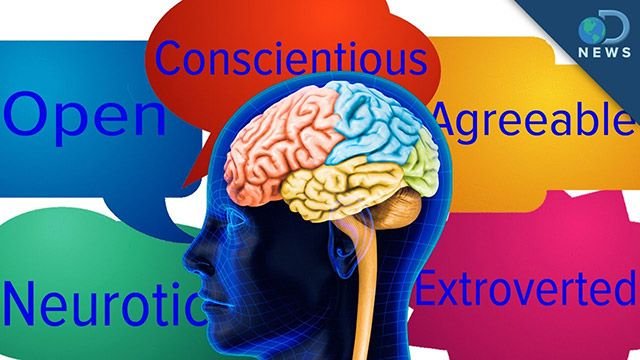
source
In psychology, there is the five-factor model (FFM) of personality that tends to have a general validity in characterizing our personalities, with some being more dominant despite us having all of these capacities within us. But these personality types have previously not been mapped to corresponding neural anatomy, which has now been done.
The journal Social Cognitive and Affective Neuroscience recently published a study involving researchers from the U.S., U.K. and Italy who examined the connection between the structure of the brain and variations in human personality.
Looking at difference in the anatomy of the cortex (the outer layer of the brain), the researchers established three types of measurements:
- thickness
- area
- amount of folding.
These three factors were used to relate the 5 major personality differences.**
The 5 major personality groups are:
- Neuroticism - the tendency to be in a negative emotional state
- Extraversion - the tendency to be sociable and enthusiastic
- Openness - how open-minded a person is
- Agreeableness - a measure of altruism and cooperativeness
- Conscientiousness - a measure of self-control and determination
Our brains have evolved to maximize the area and folding potential by reducing the thickness of the cortex. Think of stretching the sheet that would be made out of rubber and then folding it. This would increase the surface area by stretching, and also becomes thinner which allows more folding to occur.
This process of cortical stretching is regarded as a key evolutionary mechanism that allowed the human brain to expand so rapidly while still being able to fit inside of our skulls. This is a process that continues to develop and grow from the womb, childhood, adolescence and into childhood. Cortical thickness decreases while folding and area increase.
In their research, Antonio Terracciano and colleagues gathered imaging data from over 500 healthy 22-26 years olds. It was obtained from publicly available data by the Human Connectome Project.
Research has shown that as people get older they are better able to handling emotions, so neuroticism goes down while conscientiousness and agreeableness go up to become more responsible and less antagonistic. Neuroticism has correlated with increased thickness which results in less area and folding in some regions of the cortex, like prefrontal areas. With personalities linked to curiosity, creativity and novelty, there is a reduced thickness in some areas of the preftontal cortices, leading to an increase in area and folding.
Each personality type has negatively and positively correlated cortical thickness, area, volume and gyrification in different places.
Neuroticism
There was a significant positive association between neuroticism and cortical thickness in a series of fronto-parietal regions (regions in red) (A). In contrast, there was a significant negative association between neuroticism and surface area, cortical volume, and local gyrification index in frontal, parietal, temporal and occipital cortices (regions in blue) (B–D).
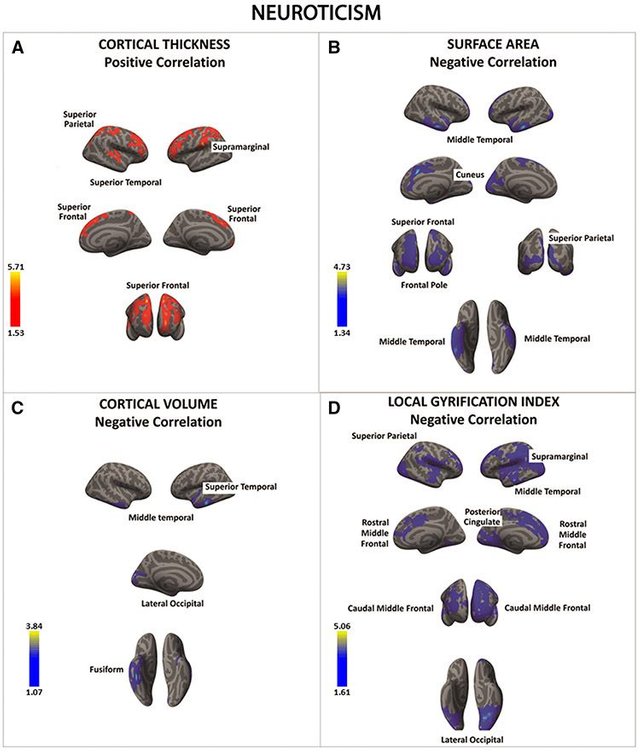
source
Extraversion
There was a significant positive association between extraversion and cortical thickness in the precuneus (in red) (A). In contrast, there was a significant negative association between extraversion and surface area and cortical volume in the superior temporal cortex and entorhinal cortex (regions in blue) (B and C). Finally, the local gyrification index in the fusiform gyrus was positively associated with extraversion (in red) (D).
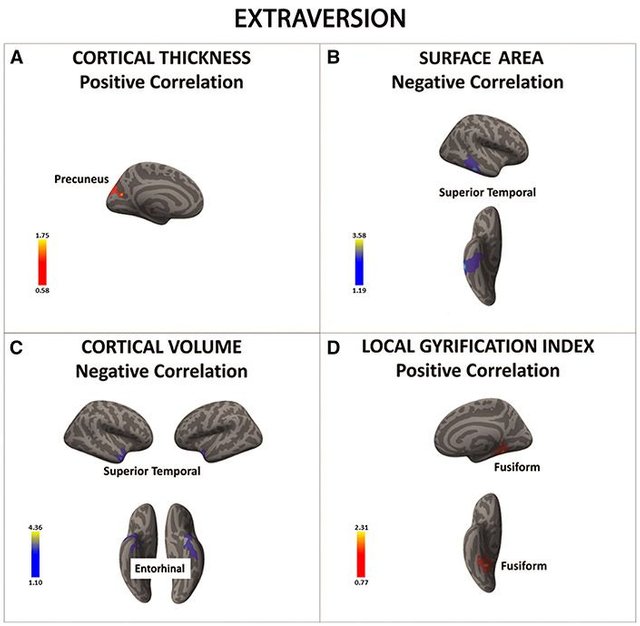
source
Openness
There was a significant negative association between openness and cortical thickness in a series of frontal and posterior regions (in blue) (A). In contrast, there was a significant positive association between openness and the surface area, cortical volume, and local gyrification index in posterior as well as anterior brain regions (regions in red) (B–D).
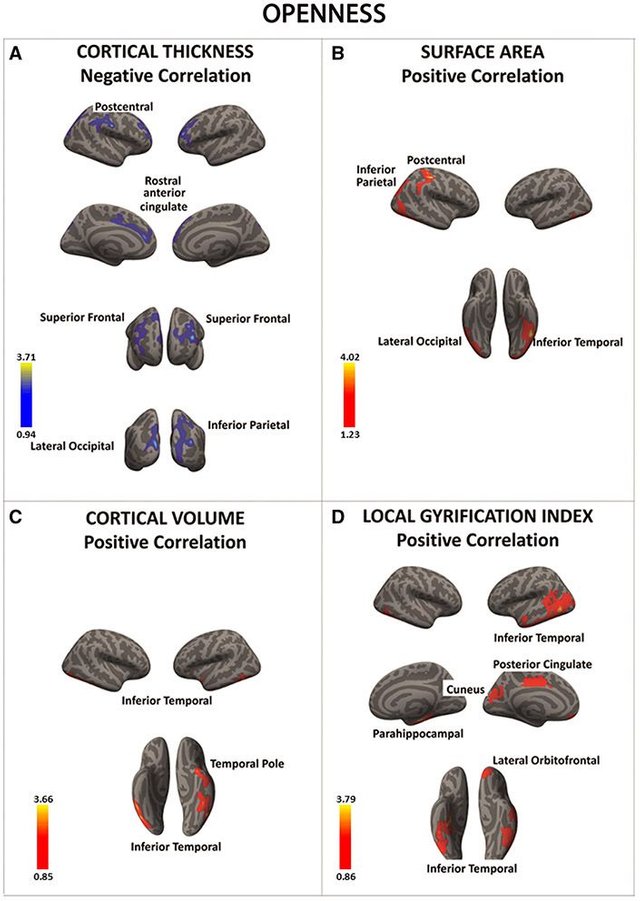
source
Agreeableness
There was a significant negative association between agreeableness and cortical thickness, surface area, cortical volume, and local gyrification index in a series of frontal and temporal regions (in blue) (A–D). The only region showing a positive association between openness and local gyrification index was the inferior temporal cortex (D).
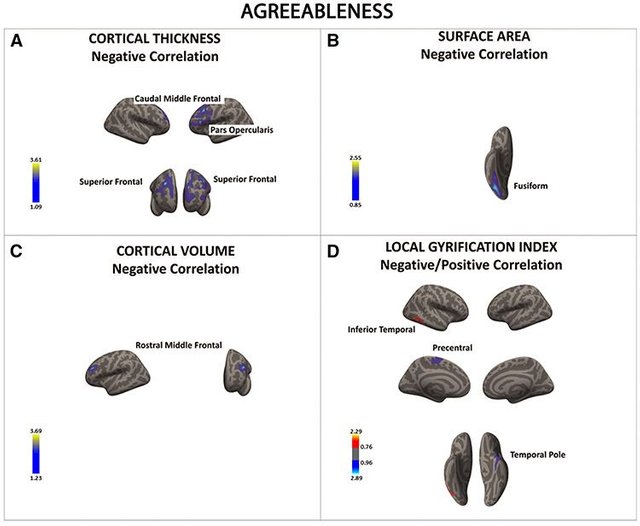
source
Conscientiousness
There was a significant positive association between conscientiousness and cortical thickness in a series of frontal regions (A). There was also a negative correlation between conscientiousness and surface area, cortical volume and local gyrification index in occipital, temporal and frontal cortices (B–D).
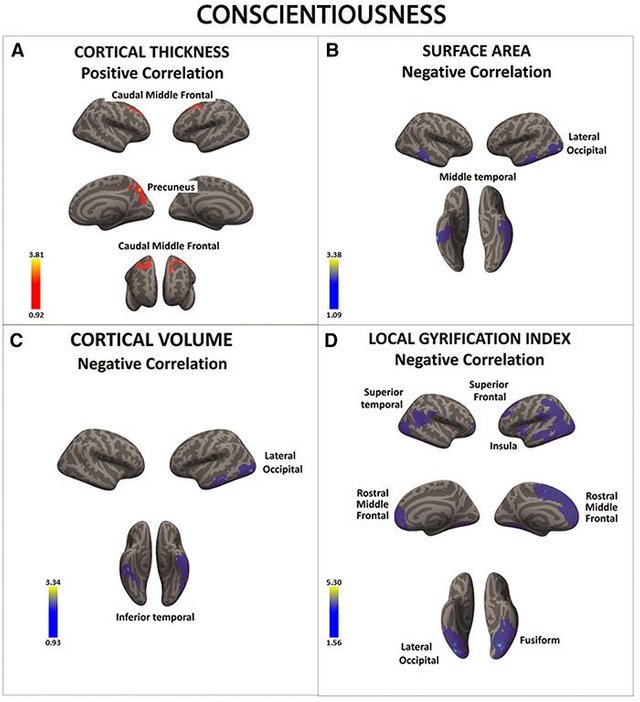
source
The changes in the personality as we age may serve as a reference frame to better understand brain structures in negative conditions such as autism, depression or Alzheimer's disease. The study showed many effects to be localized to the prefrontal cortex which is a more evolved part of the brain found in primates and humans compared to other animals.
References:
- Nasty or nice? Study links personality to brain shape
- Brain shape linked to personality differences
- Surface-based morphometry reveals the neuroanatomical basis of the five-factor model of personality
- The Human Connectome Project
If you appreciate and value the content, please consider:
Upvoting  , Sharing
, Sharing  or Reblogging
or Reblogging  below.
below.
Please also consider supporting me as a Steem Witness by voting for me at the bottom of the Witness page:

@krnel
2017-01-28, 12:03pm

Hello @KrNel,
Congratulations! Your post has been chosen by the communities of SteemTrail as one of our top picks today.
Also, as a selection for being a top pick today, you have been awarded a TRAIL token for your participation on our innovative platform...STEEM.
Please visit SteemTrail to get instructions on how to claim your TRAIL token today.
If you wish to not receive comments from SteemTrail, please reply with "Stop" to opt out.
Happy TRAIL!
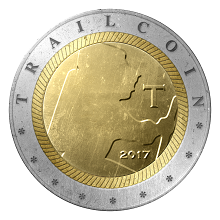
I didn't understand the pictorials for the personality traits. It would have made more sense if they used the shape as shown in the opening graphic. It may become clearer to me when I drill down into the links you provided.
Very interesting article!
If you go look at the cortical gray matter, it has thickness, and folding to produce surface area. Then if you read about the rubber sheet analogy, it should make more sense how this works. The picture are the areas (unlabeled), where certain measurable differences were seen. And yes please do dig deeper if my summary posts are not elaborating enough ;) hehe
The lack of clarity is totally visual. I can't map the shapes shown in the traits section to the picture shown at the top of the article. Of course a 3D view where only the relevant portion is highlighted and the rest of the brain is "grayed" out would be even better. Perhaps further investigation will help to clear that up for me.
It would be nice to correlate front, left, back, top of head with traits, similar to the opening picture. Of course it would be a crude representation, but similar to the idea that vision is affected by damage to the back of the head or motor function on the right side of the body is affected by damage to the left side of the brain.
the first image is not representative of actual locations ( I don't think). Please disregard it. Its a flashy pic to get attention made by discovery channel.
Yes, I get that. I used it only as a way to explain my inability to visualize the physical portion of the brain each trait corresponds to. The little gray blobs don't help to do that in my mind.
This is yet another very powerful post and extremely well done in relation to the writing and schematics. Thank you so very much. I have been hit with the phrenology bug when I was in high school and it has only been more and more at the forefront of my gaze when I observe someone's behaviours. you article is enlightening and has, to my appreciation and awareness, great implications.
Again, thank you for sharing and namaste :)
I knew there was something to phrenology. It's just that it was inside the head, not outside.